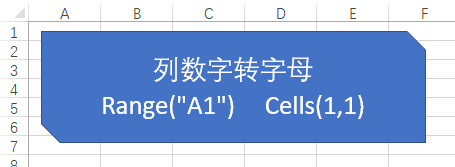|-------------------|
| 内容:提供两种方法,并设计防错检测 |


以下是VB.NET列号转字母函数实现,包含防错检测和健壮性优化。提供两种方案:独立算法版 (不依赖Excel)和Excel交互版(利用Address属性),均通过严格边界检查和异常处理确保可靠性。
⚙️ 一、独立算法版(推荐)
基于26进制转换原理,无需Excel环境依赖,适合通用场景:
sql
''' <summary>''' 将列号转换为Excel列字母(独立算法版)''' </summary>''' <param name="colNum">列号(1-16384)</param>''' <returns>列字母(如"A", "AA")</returns>Public Function NumberToColumnLetter(colNum As Integer) As String ' 参数校验 If colNum < 1 Then Throw New ArgumentException("列号必须 ≥1", NameOf(colNum)) ElseIf colNum > 16384 Then Throw New ArgumentOutOfRangeException(NameOf(colNum), "列号超出Excel最大范围(16384)") End If Dim dividend As Integer = colNum Dim result As String = String.Empty Try ' 核心算法:26进制转换 Do While dividend > 0 Dim modulo As Integer = (dividend - 1) Mod 26 ' 余数范围0-25 result = ChrW(65 + modulo) & result ' 65='A' dividend = (dividend - 1) \ 26 ' 整数除法 Loop Catch ex As Exception Throw New InvalidOperationException("转换过程中发生错误", ex) End Try Return resultEnd Function防错设计说明:
- 输入范围校验:强制限制列号在Excel有效范围(1-16384)
- 类型安全:使用 Integer 避免非整数输入
- 异常分层:
- ArgumentException :参数格式错误
- ArgumentOutOfRangeExceptio n :超范围值
- InvalidOperationException :运行时计算错误
- 算法健壮性:
- (dividend - 1) 调整解决26的倍数问题(如52→AZ)
- ChrW 替代 Chr 支持Unicode环境
📍 二、Excel交互版(通过Address提取)
利用Excel内置列标计算逻辑,需引用 Microsoft.Office.Interop.Excel :
sql
Imports Microsoft.Office.Interop.Excel''' <summary>''' 通过Excel单元格地址提取列字母''' </summary>Public Function NumberToColumnLetterViaExcel(colNum As Integer) As String ' 参数校验(同上) If colNum < 1 Or colNum > 16384 Then Throw New ArgumentOutOfRangeException(...) ' 同独立版校验 End If Dim xlApp As Application = Nothing Try ' 启动Excel进程 xlApp = New Application() Dim workbook As Workbook = xlApp.Workbooks.Add() Dim sheet As Worksheet = workbook.Sheets(1) ' 获取单元格地址并提取列字母 Dim cell As Range = sheet.Cells(1, colNum) Dim address As String = cell.Address(False, False) ' 返回格式如"AB1" Return address.Substring(0, address.Length - 1) ' 移除行号 Catch ex As COMException Throw New InvalidOperationException("Excel操作失败: " & ex.Message, ex) Finally ' 强制释放COM对象(防内存泄漏) If xlApp IsNot Nothing Then xlApp.Quit() Marshal.ReleaseComObject(xlApp) End If End TryEnd Function防错设计说明
:
- 资源安全:
- Try/Finally 确保即使出错也释放Excel进程
- Marshal.ReleaseComObject 避免COM对象残留
- 地址解析:直接利用 Range.Address 属性,100%兼容Excel列标规则
- 进程隔离:独立启动Excel进程,不影响宿主环境
🔍 三、方案对比与选型建议
| 特性 | 独立算法版 | Excel交互版 | 适用场景 |
|---|---|---|---|
| 依赖项 | 无 | 需安装Excel和Interop库 | 无Office环境的服务端应用 |
| 性能 | 高速(μs级) | 较慢(ms级,需启动Excel进程) | 高频调用场景(如批量处理) |
| 最大列支持 | 16384(XFD) | 同左 | 标准Excel文件处理 |
| 错误隔离 | 纯内存计算无副作用 | 可能受Excel进程状态影响 | 稳定性要求高的自动化任务 |
| 维护成本 | 代码逻辑固定 | 需处理COM对象生命周期 | 长期运行的系统 |
推荐优先选择独立算法版,除非您已明确需在Excel插件环境中使用交互版。
🛡️ 四、防错机制深度解析
- 输入验证三层防御:
- 类型检查:通过参数类型 Integer 过滤非数值
- 范围校验:硬编码限制1-16384(Excel最大列)
- 格式验证(交互版):自动处理列字母大小写
- 资源泄漏防护:
- 交互版严格遵循 Try/Finally 释放模式
- 使用 Marshal.ReleaseComObject 彻底销毁COM对象
- 算法边界处理:
- (colNum - 1) 调整:解决26/52/78等临界值错误(经典Bug见)
- 整数除法 \ 替代浮点除法,避免舍入误差
💎 五、测试用例与验证建议
cs
Sub TestConversion() Dim testCases As New Dictionary(Of Integer, String) From { {1, "A"}, {26, "Z"}, {27, "AA"}, {52, "AZ"}, {703, "AAA"}, {16384, "XFD"} } For Each kvp In testCases Dim result = NumberToColumnLetter(kvp.Key) Debug.Assert(result = kvp.Value, $"失败:{kvp.Key}→{result},应为{kvp.Value}") NextEnd Sub测试要点
:
- 边界值:1、26、27、16384
- 特殊值:52(AZ)、702(ZZ)、703(AAA)
- 错误输入:0、-1、16385(应抛异常)
